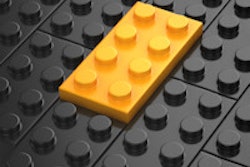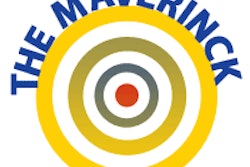
CHICAGO - More radiologists may soon be keen to learn about the art and science of hypnosis, following its successful use in France in patients who suffered from claustrophobia prior to undergoing MRI.
A group from L'Hôpital Privé de Thiais, Val de Marne, in the Paris suburbs, have used hypnosis daily in the radiology department since 2004. MRI technicians Marc-Andre Fontaine and Nachwan Alexandre, along with radiologist Dr. Bruno Suarez, learned Ericksonian hypnosis methods over 15 months. They are presenting their work in a scientific poster at the RSNA 2011 meeting.
Of the 3,300 or so patients who have undergone MRI at Val de Marne over the past seven years, 45 (1.4%) refused the scheduled MRI examination and were identified as claustrophobic. Four of these people suffered a panic attack. A brief session of hypnosis lasting between three and five minutes was proposed just before MRI, although four (9%) of the 45 claustrophobic patients declined the hypnosis.

"Hypnosis appears to be a suitable, efficient, rapid, and inexpensive tool for the care of MRI patients suffering from claustrophobia," the authors noted. "This drug-free method can lead to shorter examination times and less postprocedural complications, and has no side effects."
Claustrophobia affects between 0.7% and 13% of patients, but between 40% and 65% feel some degree of anxiety, they stated. Its prevalence tends to be underestimated, and it is characterized by negative anticipation and avoidance of examinations, plus failure to attend an MRI appointment.
The classical treatments include anxiolytic medication, anesthesia, and adopting a prone position, as well as using open MRI systems, cognitive behavioral therapy, and visual aids and music.
During hypnosis, sensory perceptions are modified, and the brain is more susceptible to suggestions, they pointed out. The technique diminishes perception of pain by up to 50%. The anterior cingulate cortex, a part of the frontal lobe, plays a role in ending automatisms, novelty detection, decision-making, learning, and pain control. The precuneus (or quadrate lobule of Foville), part of the parietal lobe, is involved in self-consciousness and imagery. These two regions are regularly activated during hypnosis, and are connected to the amygdala complex. This complex comprises numerous nuclei and is situated in the medial temporal lobe, close to the hippocampus. It belongs to the limbic system, which helps process emotions.
"Anxiety arises out of the blue; it corresponds to a state of apprehension or fear occurring with no identifiable hazard," explained Fontaine, lead author of the RSNA exhibit. "The MRI examination is performed while the patient mentally recalls a pleasant memory involving a repetitive noise."
The methods used by the French group were developed by Dr. Milton Hyland Erickson, a U.S. psychiatrist who founded modern hypnotherapy. He created a technique based on conversation, in opposition to the authoritative approach of classical hypnosis.



















